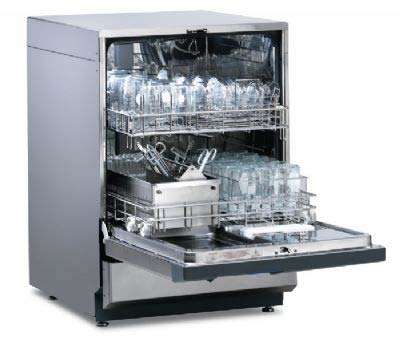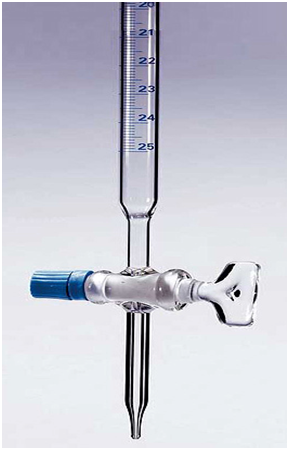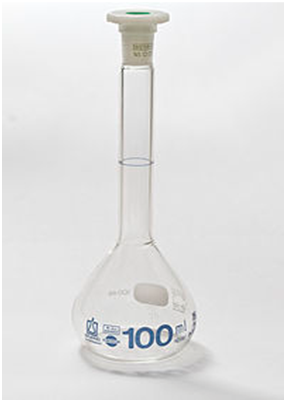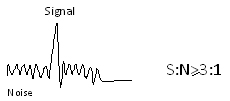Volumetric Apparatus – Use & Calibration

Volumetric apparatus is an essential requirement for quantitative estimations. Different types of glassware are used in quantitative chemistry to measure the volume of liquids. The reason why only glass equipment is used in chemistry is due to their negligible reactivity, high durability, and lesser costs.
However, one needs to use these apparatuses carefully to get appropriate readings each time. Along with this, a regular calibration of volumetric glassware is also compulsory to achieve more accurate results. Let’s first understand what calibration means.
Calibration Of Glassware
Accuracy is the most crucial factor in quantitative chemistry. A slight error in measurements can lead to a great disaster. That is why only standard volumetric glassware is used in the domain. But these apparatuses also fail to deliver the exact estimations, even after claiming to do so.
This is where the calibration process comes in. It is utilized to check how precisely can the equipment measure a volume. So during any experiment, the corresponding apparatus’s error can be taken into account.
Types of Glassware
Laboratory glassware is made from borosilicate glassware which is resistant to thermal shock and chemical attack. Generally, volumetric glassware can be divided into two categories based on calibration.
Two categories of glassware are commonly used in laboratories:
Type A
Type A glassware is used for work requiring highest accuracy of results. It complies with requirements ASTM E694 standard. The glassware bears the letter A and is calibrated to half the tolerance level of Class B glassware. It come with a calibration certificate bearing a unique serial number for establishing traceability. Type A glassware does not require further calibration.
Type B
Double the tolerance limit of class A glassware. It is used for routine work and requires calibration before putting to use.
Cleaning of Glassware

Volumetric glassware must be washed and dried before use as unclean glassware can introduce contamination errors.
- Soak used glassware in water and drain. Clean with a cleaning detergent.
- Rinse with dilute potassium dichromate solution in sulphuric acid.
- New glassware is slightly alkaline in nature so soak in slightly acidic solution e.g. in 1% \(HNO_3\) or HCl for an hour, then rinse with distilled water
Cleaning machines save time when bulk cleaning is required. They accommodate a wide range of glassware shapes and sizes and permit a range of cycles including washing, rinsing and hot dry air cycles. Suppliers of laboratory glassware washing machine include:
Care in Handling of Volumetric Glassware
- When washing take special care so that it does not break on striking wash basin walls
- When shaking a volumetric flask, hold both neck and bottom using both hands to prevent breakage
- Remove the stopper from volumetric flask before oven drying. Do not raise temperature above \(60^0\)C and cool to room temperature before use.
Calibration of Glassware
- Calibration of volumetric apparatus at specified intervals is an important task.
- Volume, weight and delivery time at calibration temperature are common parameters for calibrations.
- Maintain constant temperature(25 +/- \(2^0\)C) during calibration and use calibrated weights
- Read lower level of meniscus for clear liquid readings and upper level for colored solutions readings, keeping your eye level horizontal in line with the liquid level
Calibration of Graduated Pipette
Graduated pipettes are used for measuring the amounts of liquid between 1 mL to 100 mL. A pipette bulb is put on one side of the equipment to create a suction for the liquid. There are four reasons why one needs to clean the pipette properly every once in a while.
- Clean apparatus will offer more accurate outcomes.
- It can be calibrated conveniently.
- The cross-contamination risk gets reduced.
- Well-maintained pipettes last longer.
The outer part of the apparatus can be easily cleaned using general lab cleaners. But one must check the instruction manual before doing so. To clean the equipment from inside, distilled water can be used.
Along with this, proper contamination cleaning must be done from time to time. This ensures that none of the liquids gets contaminated during experiments.
The importance of pipette calibration increases due to the use of this equipment. Experts require the most accurate results from it. Thus, it must be calibrated. For the purpose of calibration of graduated pipettes, these steps can be followed:

- At time of calibration, ensure no air bubbles are sticking to the glass walls and no water droplets exist above the graduation mark
- Weigh a clean dry beaker \((W_1)\)
- Deliver water from calibrated mark till it is emptied or in case of graduated pipette till the calibrated mark.
- Repeat 3-4 times till consistent reading is obtained for weight \((W_2)\), volume and delivery time.
- Volume collected = \((W_2 – W_1)\) / D,
where D is density of water at \(25^0\)C .
Now, let’s move on to the calibration processes of different equipment.
Calibration of Burette
A burette is a narrow and long glass tube that comes with a stopcock at the base. The liquids are poured from the above end, and then the stopcock can be used to dispense a certain amount of it. Titration experiment comes under one of the primary burette laboratory apparatus uses.
It is extremely vital to keep the apparatus clean before using. Otherwise, the droplets of the liquid will stick to its walls, and it won’t give out accurate results. Besides this, the tip and stopcock of the burette must be in place and working appropriately. It will help in getting the exact amount of liquid.

For calibration purposes of this equipment, these steps can be followed:
- Weigh a clean dry beaker \((W_1)\)
- Deliver water from 0 mark to the point of calibration with tip touching the beaker wall.
- Weight of the collected water + beaker \((W_2)\)
- Take note of the water temperature with a calibrated thermometer
- Repeat process at least 3 times
- Volume collected = \((W_2 – W_1)\) / D where D is density of water at recorded temperature.
- Record the delivery time and volume for consistent results.
Calibration of Volumetric Flask
Unlike other glassware equipment on the list, a volumetric flask is used for mixing or preparing a certain amount of any solution. It is crucial to clean this apparatus properly so that appropriate quantities can be measured, and no contamination happens with the liquid.
In general cases, volumetric flasks can be cleaned with water or other cleaning agents. But a proper procedure must be followed to avoid contamination. Plus, they are kept in an inverted position to let the liquid at the bottom drain away. A clean air stream can also be used to dry the equipment faster.

To calibrate these, one can follow these steps:
- Dry the flask after rinsing with acetone
- Take weight \((W_1)\)
- Fill the flask up to the graduation mark with distilled water and weigh the filled flask (W2)
- Note the temperature of water using the calibrated thermometer
- Volume = \((W_2 – W_1)\) / D , Where D is density of water at recorded temperature
- Repeat 3 – 4 times to ensure consistency of volumes
It is necessary to clean, calibrate, and maintain all the volumetric glassware to ensure appropriate results and better durability.
Micropipettes for Highest Accuracy

Micropipettes are used to accurately measure and dispense small volumes of liquids in µl to ml range i.e., 1µl to 1000µl (1ml)
Advantages of using micropipette
- Fast
- Accurate
- Reproducible
- Disposable tips
- Do not require washing or rinsing
- Reduction of pipetting errors associated with normal pipettes
Precautions while using Micropipettes
- Never use the micropipette without a tip.
- Never lay or invert a loaded micropipette down or tilt it as this could allow liquid to run into the pipette barrel.
- Return the button to the top position smoothly and DO NOT snap back.
- Use the micropipette for only the specified pipetting range.
- Wipe droplets if any from the sides of tip but never wipe the tip opening.
- Never use a micropipette without a tip as it will contaminate the shaft assembly.
- Store micropipette set to its maximum volume. This releases pressure in the spring inside the micropipette.
- If trying to pipette organic solvents make sure they are compatible with the tip and also allow solvents to come to room temperature before pipetting.
Calibration of Micropipettes
These are used for the same purpose as a regular pipette. The only difference between the two is the amount of liquid they can hold. Micropipettes are used just for measuring quantities of less than 1.00 mL. They also come with disposable tips. So you can easily maintain their cleanliness. To calibrate them, one can follow these simple steps:
- Label and weigh five centrifuge tubes.
- Using single tip to transfer same volume in each centrifuge tube with single low range volume.
- Weigh each tube and record weight of water transferred into each tube.
- Calculate volume of water in each tube
- V= W/D
- Where V = volume in µl
- W = weight in mg
- D = Density of water in mg/ µl at the recorded temperature
- Calculate the standard deviation based on the five volumes.
- Determine the accuracy of micropipette by calculating the percentage (%) error.
- Repeat above steps with single upper range volume of micropipette.
Choice of Balance for Micropipette Calibration
Weighing of transferred volumes requires different types of balances for the required accuracies
| Micropipette capacity | Balance to be used |
| 0.5 -10µl | Micro Balance |
| 10 – 200µl | Semi Micro Balance |
| 200 – 1000µl | Analytical Balance |




I am getting knowledge about all analytical tech. from ur site, its very nice. Thank u.
This site is the best i must confess
Purpose of
Calibration volumetric apparatus
Hi Rohit, All measurement instruments need to be calibrated to ensure their accuracy, precision and traceability to international standards. Volumetric glassware can be of different grades and accompanied by calibration certificates, but these still may need to be verified and periodically re calibrated.
Thank you so much for the information
You are welcome.
Nice information